Yom Kippur in Yiddish: Sanctity and Sacrilege
With Miriam Borden
As 20th century Yiddish culture reinterpreted the most hallowed tenets of Judaism, not even the Day of Atonement was safe. For some, Yom Kippur remained the holiest day of the year, a day of fasting and prayer. For others, it was holy day now contending with the demands of modern life. And for still others, the day was a relic of traditional life that needed an overhaul. Through literature, anarchist Yom Kippur balls, and new 21st century media, Yiddish culture has a lot to say about the delicate balance between the demands of being Chosen, and the demands we place upon ourselves on the path to teshuvah— however we define it.
 Miriam Borden is a doctoral student in Yiddish Studies at the University of Toronto, where she teaches Yiddish language and culture classes. She is also a tour guide for the Ontario Jewish Archives: Blankenstein Family Heritage Centre’s walking tours of Kensington Market. Currently, Miriam is translating the poetry of Shimon Nepom, the College Street streetcar conductor who was Toronto’s most prominent Yiddish poet, and working on a dissertation about Ruth Rubin, the great Yiddish folksong collector.
Miriam Borden is a doctoral student in Yiddish Studies at the University of Toronto, where she teaches Yiddish language and culture classes. She is also a tour guide for the Ontario Jewish Archives: Blankenstein Family Heritage Centre’s walking tours of Kensington Market. Currently, Miriam is translating the poetry of Shimon Nepom, the College Street streetcar conductor who was Toronto’s most prominent Yiddish poet, and working on a dissertation about Ruth Rubin, the great Yiddish folksong collector.





